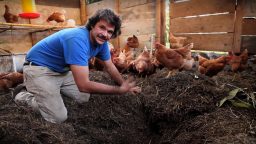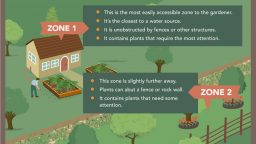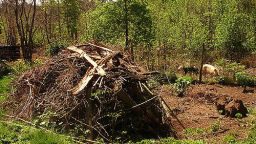Originally hailing from the Mediterranean, two story farming is a sustainable and efficient way to multitask on your farm or homestead.
It is essentially what it sounds, farming on two “stories”. Only this isn’t in a structure, like the visions of modern urban farms of the future. Two story farming combines agriculture with raising livestock, in a very cool way.
Traditionally, farmers use trees as the “upper story” of the two story concept. Carob, olive oil, or some other tree, is grown above an area in which pigs, cattle, or goats roam, allowed to nourish themselves on whatever is cast down from the branches above.
Trees that have both leaves and fruit that are edible to livestock are called “livestock fodder trees”, and are highly coveted by meat, milk, and egg producers.
What’s really cool about this set-up, is that it is essentially permanent, and not subject to necessary seasonal work beyond harvest and tending to the animals. Because the ground beneath the trees is not tilled, there is no soil erosion, and the foliage of the trees and the pasture underneath create a wonderful habitat for the animals, which helps with meat supply.
This essentially means that the animals live underneath the trees that produce their feed! A great advantage of this, beyond the ease and convenience of your animals getting to eat fresh, nutritious food, is that you can use otherwise inferior pieces of land and turn them into food forests for your livestock.
With some careful planning, many farmers are able to create a nearly year-round supply of fodder for their animals. One tree might be fruiting in spring, another in summer, another in fall, and another in late fall.
In turn, the animals provide fertilizer and nutrients for the trees by leaving their droppings. It is a complete cycle, a created ecosystem that benefits all the organisms involved!
Some farmers even plant annual crops of grain or vegetables in between the trees. Even though there normally isn’t full sun due to the shade of the trees, the topsoil is so rich, fertile, and deep, from the manure, that it still produces quite a bit. The trees also hold the soil in place, and continue to enrich it themselves due to the falling leaves and fruit.
If you enjoyed this, you might also like….
Long-Term Survival for Homesteaders…
Natural Healing Secrets You Need to Know…
Effective Primal Diet Hacks…





